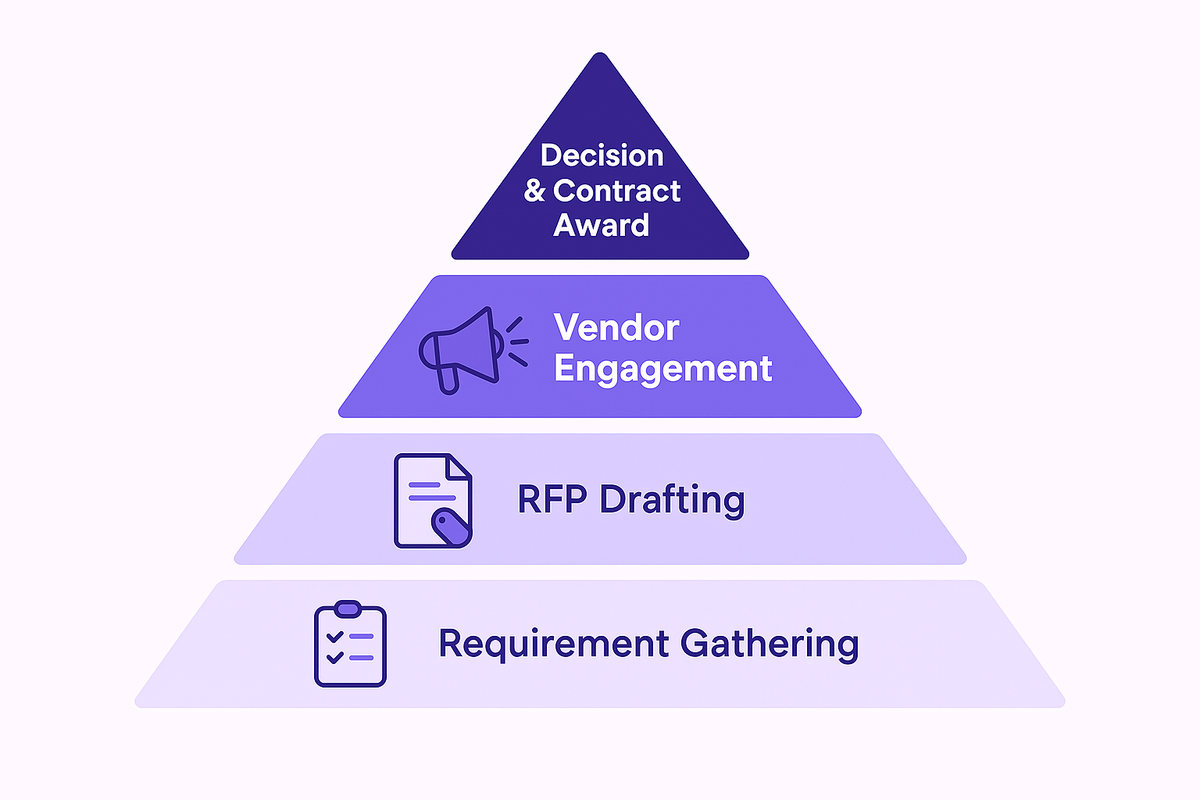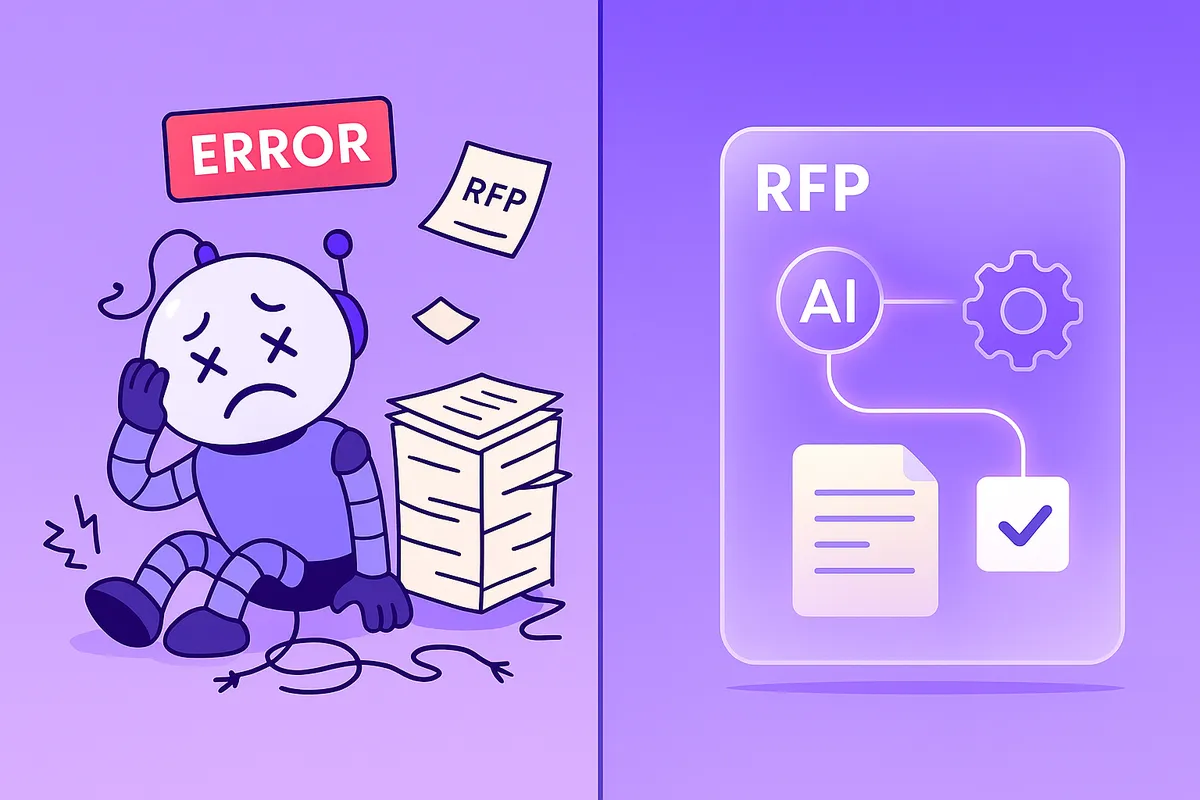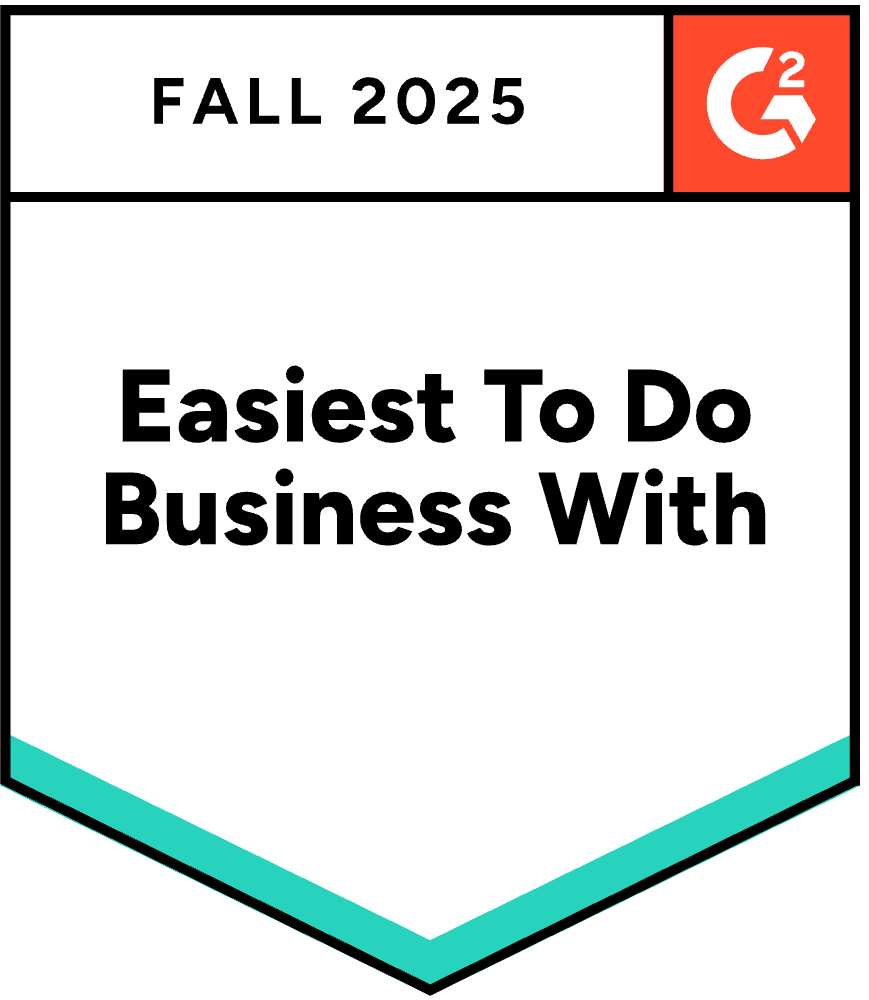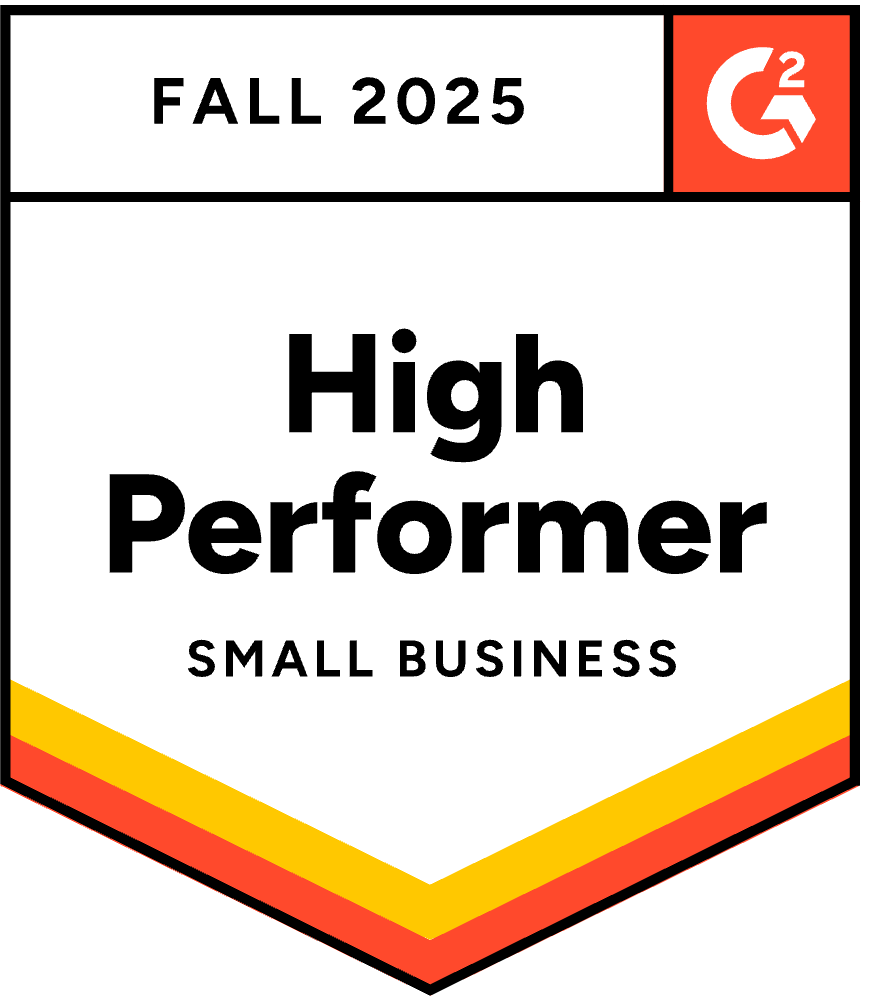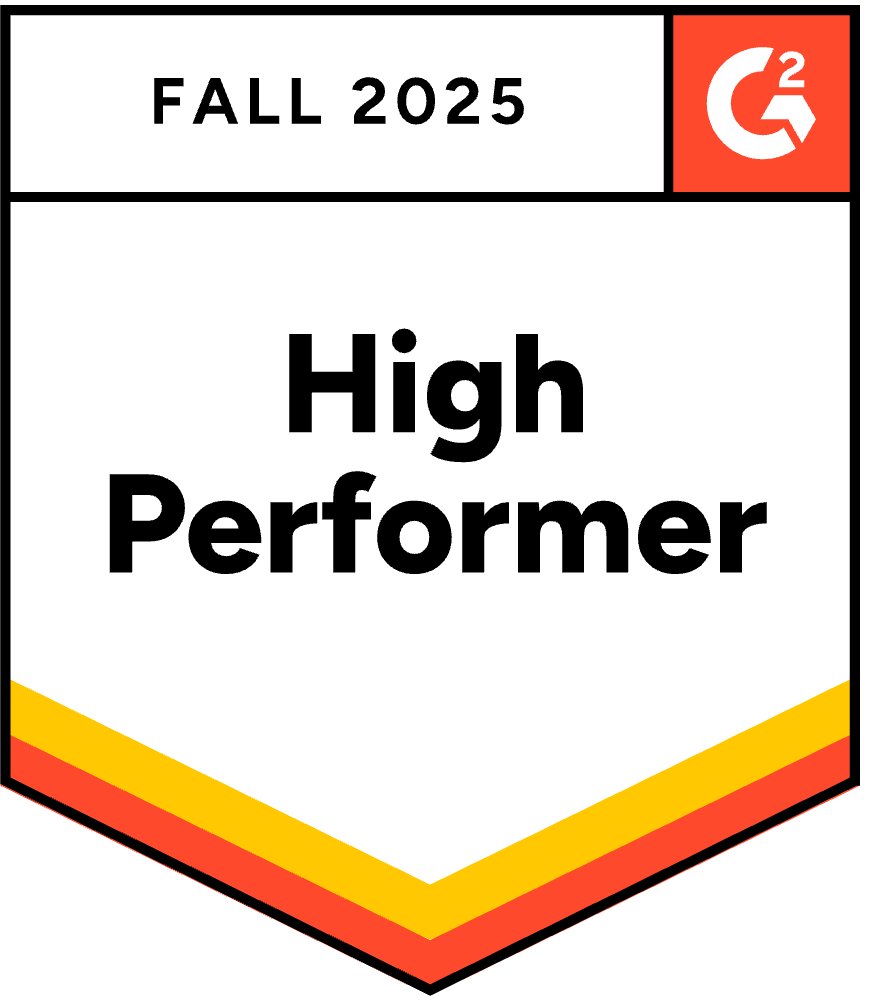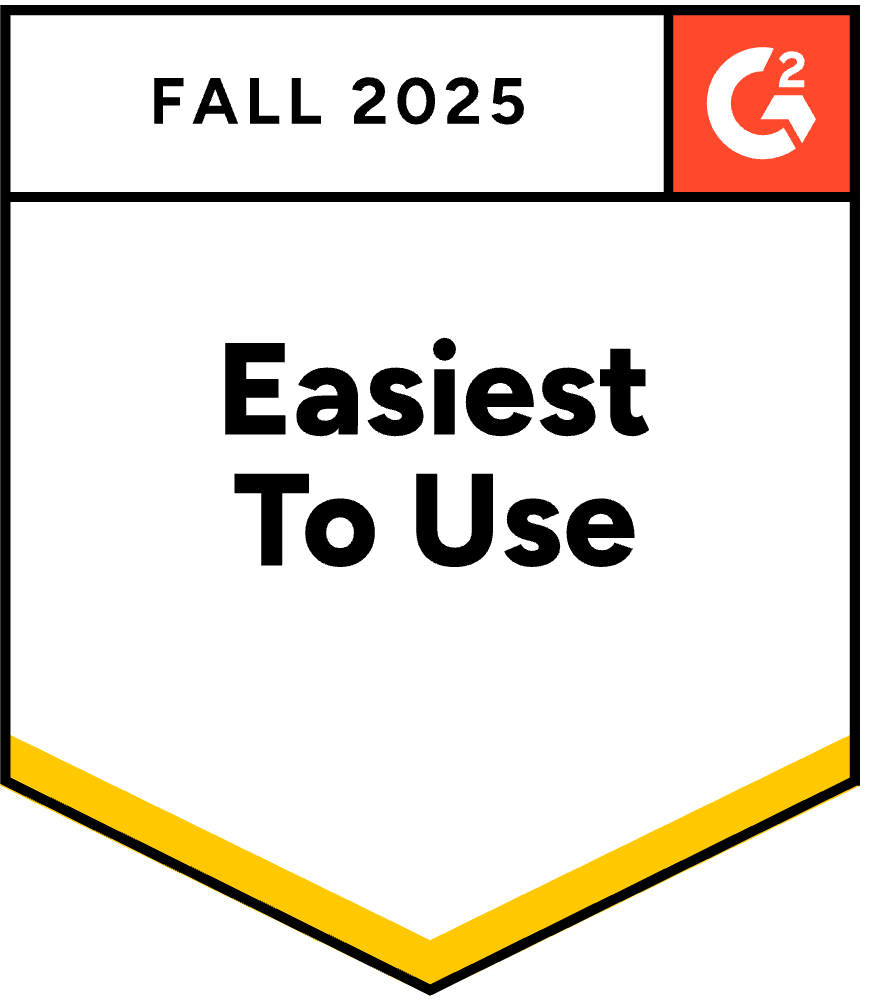How to Respond to IT RFPs & Win More Deals
May 19, 2025
By
Evie Secilmis

What Everyone’s Calling “Automation” Is Just Organized Copy-Paste
Let's be honest: RFPs, DDQs, and security questionnaires are getting longer and more complex. This is especially true for IT RFPs, which are now central to winning major deals. The stakes are higher, the timelines are tighter, and simply pulling answers from a content library won't work anymore. Buyers can feel when a response is a copy-paste job, and outdated content instantly erodes trust. To win, you need a strategic response process that is accurate, collaborative, and tailored to what your clients actually want. This guide will show you exactly how to build one.
So why are most proposal tools still acting like it’s 2016?
First Things First: What Exactly is an IT RFP?
Before we get into the weeds of winning, let's make sure we're all on the same page. An IT Request for Proposal (RFP) can feel like a mountain of a document, but at its core, it's a structured way for a potential client to ask for help. They have a complex tech problem or a major project, and they need to find the best possible partner to solve it. The RFP is their way of laying out their needs and inviting companies like yours to propose a solution. It’s more than just a request for a price list; it’s an invitation to showcase your expertise, creativity, and understanding of their business challenges. Think of it as the start of a conversation, a detailed one, that allows the buyer to compare different vendors on a level playing field.
Understanding the purpose behind the RFP is the first step to crafting a response that doesn't just check boxes but actually connects with the buyer. They aren't just buying software or a service; they're looking for a partner who can deliver a specific outcome. Your job is to prove you're that partner. This process encourages vendors to put their best foot forward, offering innovative solutions and competitive pricing. For the buyer, it formalizes the selection process, ensuring fairness and transparency. For you, it’s a clear shot at a high-value deal, provided you know how to approach it strategically and efficiently.
Breaking Down the Request for Proposal
So, what is an RFP in practical terms? It’s a formal document that a business or organization creates to solicit proposals from potential vendors for a specific product or service. According to Adobe Acrobat, businesses use an RFP when the project is complex and requires a unique solution. It’s not for simple, off-the-shelf purchases. Instead, it’s for situations where the buyer needs to evaluate different approaches, technical capabilities, and vendor qualifications. The document itself details the project's scope, goals, requirements, and the criteria the buyer will use to make their decision. It’s their playbook, and they expect you to read it cover to cover and respond to every single point with a thoughtful, detailed answer that proves you’re the right choice.
Decoding the Acronyms: RFP vs. RFI vs. RFQ
The world of sales proposals is swimming in acronyms, and it's easy to get them mixed up. The RFP is the most detailed of the bunch, but you'll also encounter its cousins: the RFI and the RFQ. A Request for Information (RFI) is a preliminary document used to gather general information. The buyer is in the research phase, trying to understand the landscape of available solutions. A Request for Quote (RFQ), on the other hand, is all about price. The buyer knows exactly what they want and is simply looking for the best price from qualified vendors. An RFP sits between these two; the buyer knows their problem but is open to different solutions and needs to compare vendors on factors beyond just cost, like methodology, experience, and support.
Open vs. Closed RFPs: Who Gets an Invite?
RFPs generally come in two flavors: open and closed. An open RFP, also called a public RFP, is available for anyone to respond to. You’ll often see these from government agencies, schools, and other public institutions that are required to maintain a transparent bidding process. They’re typically posted on the organization's website or on public procurement portals. A closed RFP, also known as an invitation-only or private RFP, is sent to a pre-selected group of vendors. Many private companies prefer this method because it allows them to solicit proposals from vendors they already know and trust, or who have been recommended. Getting on the list for a closed RFP means you’ve already made a good impression in your industry.
Anatomy of an IT RFP: What to Expect
When an IT RFP lands on your desk, it can look intimidating. These documents are often dense, packed with technical specifications, legal requirements, and a whole lot of questions. But once you understand their structure, they become much more manageable. Most IT RFPs follow a similar format because the buyer is trying to gather specific, comparable information from every vendor. They need to see, side-by-side, how your solution stacks up against the competition. This means you’ll see sections covering everything from the company’s background and project goals to detailed technical requirements and pricing structures. The key is to treat the RFP not as a questionnaire, but as a blueprint for your proposal. Each section is a clue, telling you exactly what the buyer values and what you need to highlight to win their business.
Breaking down the document into its core components helps you allocate resources effectively and build a response strategy. You can assign different sections to subject matter experts on your team—your tech leads can tackle the technical requirements, your legal team can review the terms and conditions, and your sales leads can focus on the executive summary and value proposition. This collaborative approach ensures that every part of your proposal is accurate, compelling, and tailored to the buyer's needs. It also prevents the last-minute scramble that so many teams fall victim to. By understanding the anatomy of the RFP, you can create a repeatable process for responding that saves time and improves the quality of your submissions.
The Buyer's Playbook: From Need to Contract
Why does a company go through the trouble of creating a massive RFP document? Because they're facing a complex challenge that requires a significant investment, and they can't afford to get it wrong. The RFP process is their risk-management strategy. It forces them to define their needs internally and creates a structured framework for evaluating potential partners fairly. For IT projects, which often involve intricate integrations, data security concerns, and long-term support, this formal process is essential. It allows the buyer to compare not just features and price, but also the vendor's project management approach, technical expertise, and long-term viability. They are looking for a partner who can deliver a robust solution and support it for years to come.
Key Sections You'll Find in an IT RFP
While every RFP is unique, they almost always contain a set of standard sections designed to give the buyer a complete picture of your offering. You can expect to see a detailed background on the company and the project, a list of specific goals, and a comprehensive scope of work. They will also outline the required format for your proposal, key deadlines, and the criteria they'll use for evaluation. Understanding these common components ahead of time allows you to prepare your content library and streamline your response process. Instead of starting from scratch every time, you can have pre-approved, high-quality answers ready to be customized for each new opportunity.
Project Scope and Goals
This is one of the most important sections of the RFP. Here, the buyer will lay out what they want to achieve with the project and what the specific deliverables are. They’ll describe the problem they’re trying to solve, the business outcomes they’re hoping for, and the functional and technical requirements of the solution. Pay close attention to the language they use. This section is your guide to tailoring your proposal. Mirror their terminology and directly address their stated goals, showing that you not only understand their needs but are also the best-equipped vendor to help them achieve their objectives. This is where you begin to align your solution with their vision of success.
Timelines and Deadlines
This section is non-negotiable. It will clearly state the deadline for submitting your proposal, along with other key dates, such as the window for submitting questions, the date for the vendor presentation (if applicable), and the target decision date. Missing the submission deadline is the fastest way to get disqualified, so mark these dates on your calendar immediately. The timeline also gives you a sense of the buyer's urgency and helps you plan your internal workflow for completing the proposal. If the timeline is tight, you'll need to mobilize your team quickly and efficiently to meet the deadline without sacrificing quality.
The All-Important Security Questionnaire
In any IT RFP, you can bet there will be a security questionnaire. This can range from a short checklist to a massive spreadsheet with hundreds of detailed questions about your data privacy, compliance, and security protocols. For many buyers, this is a pass/fail section. Answering these questions accurately and consistently is critical, but it can also be incredibly time-consuming. This is where having a centralized, AI-powered knowledge base becomes a game-changer. Tools like HeyIris can help you manage vast libraries of security information, ensuring your answers are always accurate, up-to-date, and ready to go, dramatically reducing the time it takes to complete these exhaustive questionnaires.
Finding and Winning Your Next IT RFP
Knowing how to respond to an IT RFP is only half the battle; you first have to find the right opportunities. The best RFPs are the ones where your solution is a natural fit for the client's needs, giving you a strong competitive advantage from the start. This means being proactive and strategic in your search, rather than just waiting for opportunities to fall into your lap. It involves knowing where to look for public bids, how to position your company to receive private invitations, and most importantly, how to quickly qualify opportunities to ensure you're only spending your valuable time and resources on the deals you have a real chance of winning. A scattergun approach to RFPs is a recipe for burnout and low win rates.
Once you’ve identified a promising RFP, the focus shifts to crafting a proposal that not only meets all the requirements but also stands out from the competition. A winning proposal is more than just a collection of correct answers; it’s a persuasive sales document that tells a compelling story about why your company is the ideal partner. It demonstrates a deep understanding of the client's challenges and presents your solution as the clear path to their desired outcome. This requires a blend of technical accuracy, business acumen, and a customer-centric mindset. Every section, from the executive summary to the pricing table, should be aligned with this single goal: proving your value and building the client's confidence in your ability to deliver.
Where to Find Public RFP Opportunities
If you're looking for public RFPs, there are several places you can search. Government agencies at the federal, state, and local levels are required to post their RFPs publicly. You can often find them on dedicated government procurement websites or portals. Beyond government contracts, many companies use third-party RFP databases that aggregate opportunities from various sources into a single, searchable platform. These services often allow you to set up alerts for specific keywords or industries, so you can be notified as soon as a relevant RFP is published. While these opportunities are highly competitive, they can be a great way to get your foot in the door with major organizations.
Getting on the Shortlist for Private RFPs
Getting invited to a private RFP is all about reputation and relationships. These opportunities aren't advertised, so you need to be on the buyer's radar before they even start writing the RFP. This means investing in your marketing, building a strong network, and establishing your company as a thought leader in your industry. Attend industry events, publish valuable content, and focus on building genuine relationships with potential clients and partners. When a company is looking for a solution, you want your name to be at the top of their list. Excellent performance on past projects and strong client testimonials are also powerful tools for earning a spot on that coveted shortlist.
Crafting a Proposal That Stands Out
In a competitive RFP process, a generic, one-size-fits-all proposal will get you nowhere. To stand out, your response needs to be sharp, client-focused, and flawlessly executed. The buyer is reading through multiple proposals, and you have a limited window to capture their attention and convince them that you're the right choice. This means going beyond simply answering the questions. You need to connect the dots for them, showing how your features and services translate into tangible business value. A winning proposal is well-written, easy to read, and tailored specifically to the pain points and goals outlined in the RFP.
Speak Their Language (Both Tech and Business)
Your proposal will be read by a variety of stakeholders, from technical experts to C-level executives. You need to speak to all of them. While it’s crucial to provide the technical details that the IT team needs, you must also articulate the business value of your solution in a way that resonates with decision-makers. Avoid getting lost in technical jargon. Instead, focus on outcomes. Explain how your solution will help them reduce costs, increase revenue, or mitigate risk. According to The Bid Lab, a successful technology proposal should be easy to understand, not just a technical manual. Frame your proposal around their business goals to make it clear why your solution is the best investment.
Follow the Rules, No Exceptions
This might sound obvious, but you’d be surprised how many companies are disqualified for failing to follow instructions. Read the RFP carefully and adhere to every single rule, from the required format and font size to the submission method and deadline. If they ask for the price on a separate page, do it. If they specify a page limit for the executive summary, stick to it. Buyers use these instructions as an initial filter. A failure to follow the rules suggests a lack of attention to detail, which is not a quality they want in a long-term partner. Don't give them an easy reason to eliminate you before they've even read your proposal.
Show You Understand Their Pain Points
A winning proposal demonstrates that you've done your homework. It shows that you don't just understand your own product, but you also understand the client's business, industry, and unique challenges. Go beyond the information provided in the RFP. Research the company, read their annual reports, and check out their latest news. Use this insight to tailor your answers and examples. When you can articulate their pain points even better than they can and then present your solution as the specific remedy for those pains, you move from being just another vendor to becoming a trusted advisor. This level of personalization shows you're genuinely invested in their success.
Don't Be Afraid to Ask Questions
Most RFP processes include a designated period for vendors to submit questions. Take advantage of this opportunity. Asking thoughtful, clarifying questions is not a sign of weakness; it's a sign of engagement and diligence. It shows the buyer that you're taking their request seriously and thinking critically about their needs. The answers you receive can provide valuable insights that help you strengthen your proposal and differentiate yourself from the competition. Furthermore, the Q&A process is another chance to build rapport with the buyer and demonstrate your expertise before you even submit your final document.
Same Workflow, New Pressure
The old model was simple:
- Build a content library
- Reuse pre-approved answers
- Hope someone remembers to update them
That worked—when buyers weren’t expecting personalized responses, compliance reviews were basic, and no one questioned whether your answers came from 2013.
But today? That model breaks under pressure.
You’re not just submitting a document—you’re building trust.
And when that content feels outdated, disjointed, or overly templated, the buyer feels it.
Most Proposal Software Hasn’t Kept Up
Despite the shiny UIs and “AI-powered” claims, most platforms still rely on:
- Searchable answer banks
- Manually updated templates
- Copy-paste workflows disguised as automation
- Tools that stop helping the second a response doesn’t fit the script
These aren’t built for nuance. They aren’t built for collaboration.
They’re built for a version of proposals that doesn’t exist anymore.
The RFPs Changed—Your Tools Should, Too
Modern proposals require:
- Content that adapts in real-time to the question, the prospect, and the context
- Alignment across sales, legal, and security—without endless revision loops
- Responses that feel like they were written just for this buyer on this deal
- Language that’s accurate, compliant, and still human
That’s what Iris was built for.
We’re Not Repackaging the Past—We’re Rebuilding the Process
Iris wasn’t built in a vacuum. It was shaped by feedback from sales reps rewriting security language, proposal teams pulling answers from five different places, and legal teams triple-checking compliance at the last minute. Every feature we’ve shipped has a story behind it—and usually, a real person who said, “there has to be a better way.”
What Makes Iris Different
Iris doesn’t recycle. It doesn’t rely on guesswork. And it doesn’t require you to remember where the right answer lives.
Instead, Iris:
- Generates draft responses grounded in your company’s approved content
- Understands the full context of what’s being asked and by whom
- Pulls from connected systems like Confluence, Notion, and CRM tools
- Learns with every use—so your process improves without extra effort
It’s not “AI-assisted search.”
It’s deterministic, context-aware automation—built for the way proposals actually happen today.
Where Most Tools Fall Short
As proposal cycles speed up, surface-level automation falls short. Teams don’t need searchable templates—they need tools that generate the right answer, fast.
That’s the difference with Iris.
It delivers accurate, context-aware responses that align with how modern teams actually work—fast, cross-functional, and under pressure.
Because real automation isn’t about bells and whistles.
It’s about getting it right the first time.
Frequently Asked Questions
What's the single biggest mistake teams make when responding to an IT RFP? The most common pitfall is treating the RFP like a simple Q&A document. Teams often fall back on pulling pre-written answers from a library without tailoring them to the specific buyer. This "organized copy-paste" approach feels generic and shows the client you haven't truly listened to their needs. A winning response is a strategic sales document, not just a completed form.
How can my proposal stand out when the RFP format is so rigid? The structure is actually your opportunity to shine. Since every vendor has to follow the same rules, you stand out by showing a deeper level of understanding within that framework. Go beyond just answering the questions by demonstrating you've done your research on their company. Use their language, connect your solution directly to the business goals they outlined, and show you understand their specific pain points.
Our security questionnaires are a huge time-sink. How can we speed up that process without sacrificing accuracy? This is a universal challenge because security information changes constantly, and accuracy is non-negotiable. The key is moving away from static spreadsheets or documents that are always out of date. A centralized, intelligent knowledge base that your team can trust is essential. When your system can provide accurate, approved answers instantly, your experts are freed up to focus on the more strategic parts of the proposal.
My team is small. How can we manage these complex RFPs without getting overwhelmed? It's less about team size and more about the efficiency of your process. First, be selective and only pursue RFPs where you have a strong chance of winning. Second, establish a clear, repeatable workflow. Instead of starting from zero every time, use tools that help you collaborate effectively and generate accurate first drafts quickly. This allows a smaller team to operate with the speed and precision of a much larger one.
Is it a bad sign if I need to ask the buyer questions about their RFP? Not at all—in fact, it's a great sign. Asking thoughtful, clarifying questions shows the buyer that you're engaged and taking their request seriously. It's a chance to get valuable details that your competitors might overlook, which can help you craft a much stronger, more targeted proposal. It also opens a line of communication and begins building a relationship before you even submit your response.
Key Takeaways
- Go beyond just answering the questions: A winning proposal is a strategic sales document, not just a Q&A. Use the RFP as a guide to prove you understand the client's core business problems and can deliver the specific outcomes they're looking for.
- Tailor every detail to the client: Generic responses get lost in the pile. Stand out by speaking the client's language, researching their unique pain points, and following every submission rule to the letter—it shows you're a detail-oriented partner from the start.
- Your proposal process needs a modern upgrade: Relying on static content libraries and copy-paste workflows leads to stale, inconsistent answers. Adopt a process that uses context-aware automation to generate accurate, up-to-date responses that build trust and win deals.
Related Articles
Share this post
Link copied!



